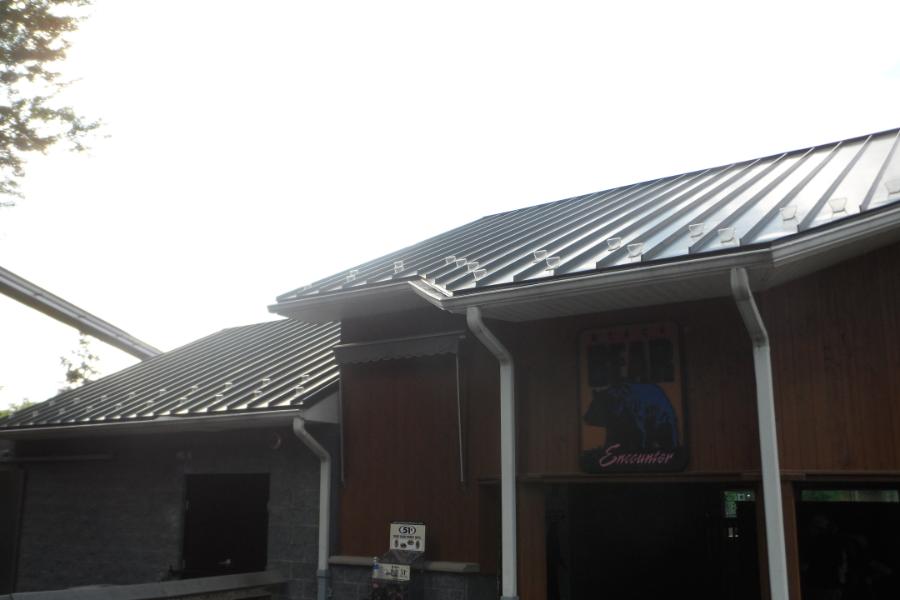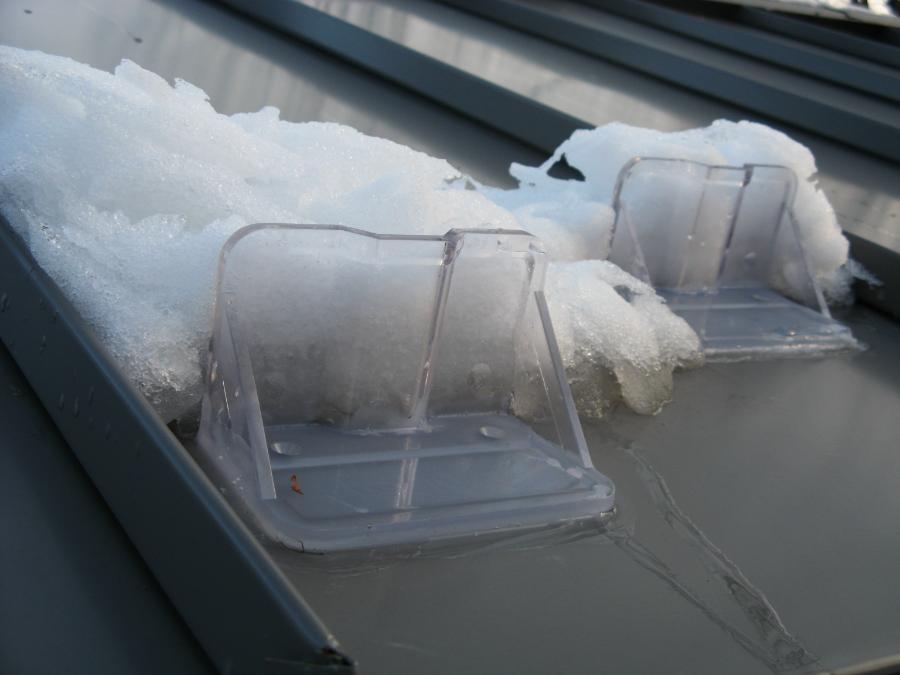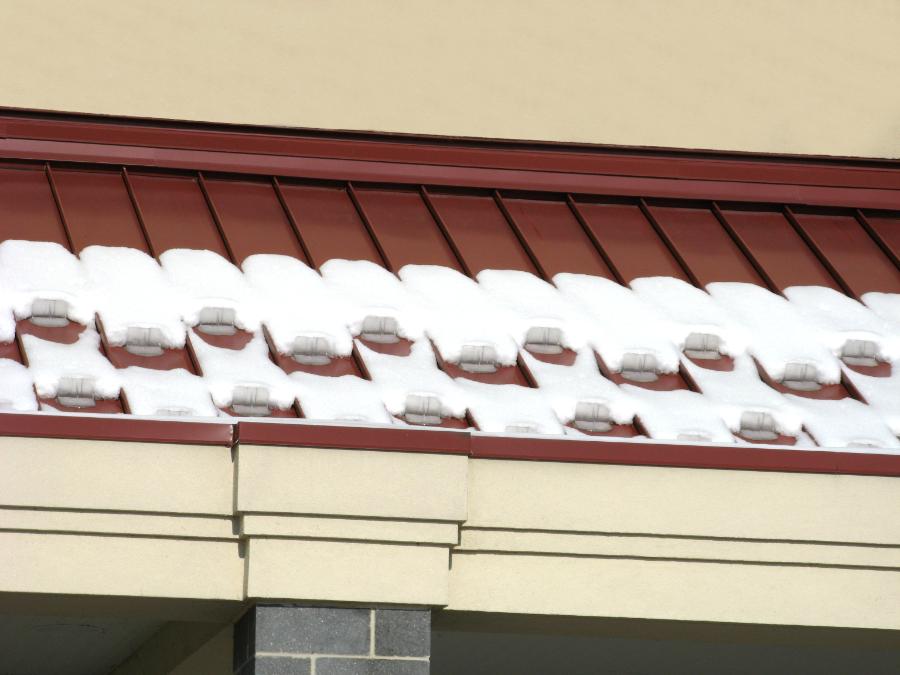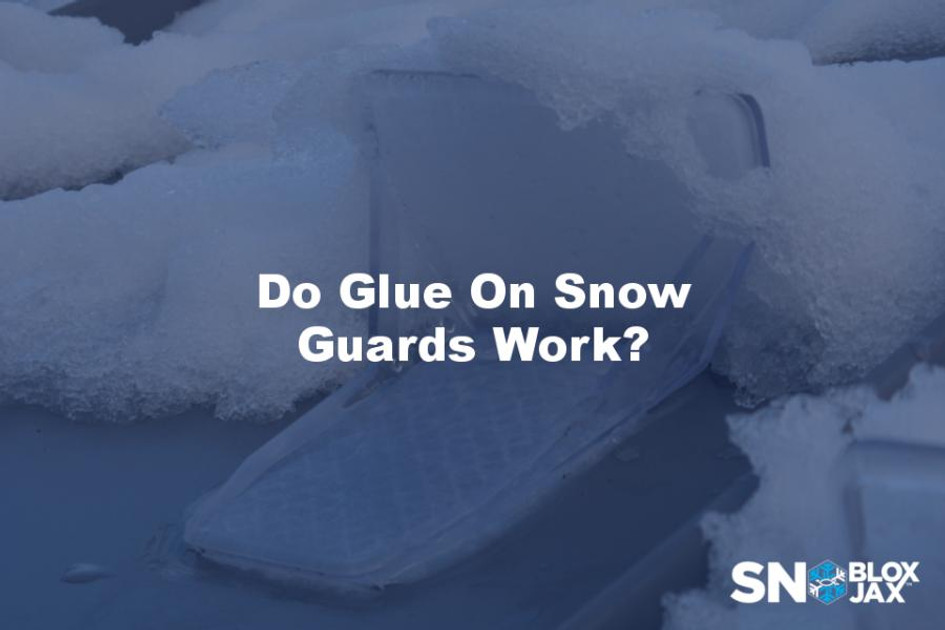Do Glue On Snow Guards Work?
Posted by Derek Gamble - SnoBlox-Snojax Specialist on Feb 15th 2024

The warmer weather of spring is right around the corner and as the temperature begins to climb, the window begins to open for installing polycarbonate snow guards with adhesive. Adhesive-mounted snow guards get a bad reputation, often based on inaccurate information, incorrect assumptions, or hit pieces put out by competing brands. It's common to hear statements like "They don't stay on the roof" or "They aren't strong," however most failures are the result of installer error. In this blog, we are going to discuss adhesive-mounted snow guards and change what you think you know about them. We pride ourselves on being a leading expert on this subject as we are the inventors of both polycarbonate and glue-down snow guards.
Glue-Down Snow Guard Advantages
Glue-down snow guards offer a notable advantage by utilizing a powerful adhesive for installations instead of relying on mechanical fasteners. Unlike other types of snow guards that may require penetration of expensive metal panels, the adhesive used with glue-down snow guards forms a direct bond with the roof. This method eliminates the need to puncture the panels, reducing the risk of potential roof leaks. Furthermore, it helps safeguard against the possibility of voiding the warranty provided by the panel manufacturer, which could occur if the installation isn't carried out correctly.
Snow guards that adhere using glue are a great match for various metal roofing styles, offering flexibility for different roofing needs. They're especially loved for standing seam metal roofs, where screw-down guards are incompatible due to the floating nature of these roof systems. More than just being practical, these glue-on snow guards bring a visually pleasing design that can effortlessly integrate with your roof's aesthetics, often appearing almost invisible. This way, your roof keeps its clean, stylish appearance while still enjoying the added safety of the snow guard system.
Surebond SB-190 is the ONLY adhesive that we recommend using. For companies that sell glue-down snow guards, this bonding agent is the accepted industry standard. When installed correctly, it should provide a dependable bond, for the life of the roof, that won't weaken or fail because it is specifically made to withstand harsh weather conditions. This increases the snow guard system's overall effectiveness in averting potentially harmful snow slides that could harm people, pets, or property. In terms of strength and durability, we have tested hundreds of glues over the years, and none come close to Surebond SB-190.

Why Do Glue Down Snow Guards Sometimes Fail?
Did You Give the Glue Enough Time To Cure?
One of the primary reasons for the failure of glue-down snow guards is the insufficient allowance of time and suitable temperatures for the glue to attain complete curing. To achieve a full cure, Surebond SB-190 requires approximately 28 days at or above 50 degrees Fahrenheit. Ideally, the optimal period for installing your snow guards is late spring or early summer. Unfortunately, during this time, people are generally preoccupied with activities like swimming and backyard barbecues rather than concerns about snow and ice. However, this mindset often leads to a surge in customer inquiries in late September and early October as they desperately seek last-minute snow retention solutions for their roofs. We distribute our products throughout the USA and Canada, including Alaska. Waiting until the fall is typically too late for customers residing in colder Northern climates to install with glue. It's important to note that while rain (after 24 hours) or temperatures below 50 degrees won't damage the glue, these conditions will temporarily halt the curing process and extend the overall curing time.
It Is Vital To Obtain a Spacing Layout
When it comes to snow guard failures, it's like playing a game of detective. Every situation has its unique circumstances and trust me….we’ve heard everything from the mundane to the bizarre. One of the biggest questions we have to ask ourselves is “Did they get a spacing layout when they bought the system”? Whenever you're shopping for snow guards, it's crucial to pick a trustworthy company that knows their stuff about snow retention and can guide you on how to set things up properly. Now, assuming the customer did get a layout, did they follow it? A solid snow retention setup, no matter how it's attached, needs the guards to span the full length of the roof. Often, you'll need multiple rows going up the slope to spread the weight evenly across the entire surface. This not only helps retain the snow but can also aid in the prevention of roof collapse due to overloading in a singular roof area. Putting guards only over isolated areas like doorways, chimneys, walkways, or HVAC units is a recipe for disaster; it's like expecting one or two police officers to handle all the crimes in the city.
Snow guards also aren't meant to be hockey or soccer goalies. If the snow and ice is moving, it is most likely already too late. A more accurate analogy is that snow guards are more like snow wranglers, keeping the snow and ice in place until it melts and drains safely away. Also, don't forget about the ground snow load; it's a key factor in designing the guard layout. If you're in an area where the snow really piles up (we're talking more than 45 pounds per square foot on average), those pad-style guards aren’t going to cut it. That's when we nudge you towards a snow rail system like our galvanized or stainless steel SnoBarand aluminum ColorBar systems. We have a full page outlining the different options we have for these heavy-duty systems. Also make sure that you are checking out our other blogs on topics like layouts, guard design and frequently asked questions (FAQs). They're like the secret files to mastering this snow guard game.
Be Wary of “Know-It-All” Contractors
Customers often share stories with us about contractors and roofers who brush off our guidelines, asserting their expertise with comments like "We know what we're doing" or boasting about their years of experience. They may even imply that our recommendations are just a ploy to sell more products. Interestingly, we regularly hear back from these same customers, describing system failures caused by these overly confident installers. A tail between their legs and a hefty repair is usually enough to correct these so-called experts when the liability falls on them.
It's essential to recognize that as the manufacturer, we possess an in-depth knowledge of our products and industry. Adhering to our spacing recommendations and instructions is vital to prevent the need for redoing the job. A snow retention system can be a costly project, but doing it twice is much more cost-prohibitive. A friendly reminder: we introduced adhesive-mounted snow guards over 27 years ago, so our insights are valuable for a reason.

Independent Lab Test Results
Glue-down snow guards prove their robustness when installed correctly. We've conducted thorough independent third-party laboratory tests on all our polycarbonate snow guards designed for adhesive installation, and the results speak volumes. Take our IceJax II, for instance, which boasts an impressive 1,561-pound rating when securely mounted using Surebond SB-190 adhesive. Another customer favorite, the SnoBlox Deuce, holds strong at 1,379 pounds when affixed with the same reliable glue.
What sets glue-down installation apart, and is often overlooked, is the resilience it offers. In the rare event of a failure, (which can be caused by unseasonably heavy “Snowpocalypse” conditions) these guards simply detach from the panel without causing any harm. When the weather warms up, it's a breeze to reattach them with a fresh application of glue. SureBond SB-190 is known for curing to itself, eliminating the hassle of trying to remove adhesive residue left on the roof. Simple cleanup with soap and water or rubbing alcohol and let thoroughly dry. Once dry, add a bit more glue on the guard's underside, and it seamlessly fits back into place in the same footprint. Installing glue-down snow guards is a straightforward process, without the need for complex tools or specialized skills. This simplicity not only saves time but also minimizes the chances of errors.
Glue Down Snow Guards Are Just What You Need!
Now that we've shed light on the benefits of glue-down snow guards, it becomes clear that, in the realm of snow guard systems, opting for glue-down ones often stands out as a superior choice. They offer a secure attachment, versatility, aesthetic appeal, reduced risk of damage, easy installation, and cost-effectiveness.
With spring just around the corner, it's never too early to start planning to protect your roof from the challenges posed by next year’s snow and ice. By choosing glue-down snow guards, you not only ensure the safety and functionality of your roof but also preserve its visual appeal for years to come.
If you're seeking more information, assistance with a layout, or to place an order, feel free to explore our Spacing Guidelines Page, drop us an email at support@snojax.com, or simply give us a call at 1-800-766-5291. We're here to help! Also, make sure to give our Snow Guard Buyer’s Guide a quick read, as it contains lots of important and easily digestible information to consider before placing your order.

